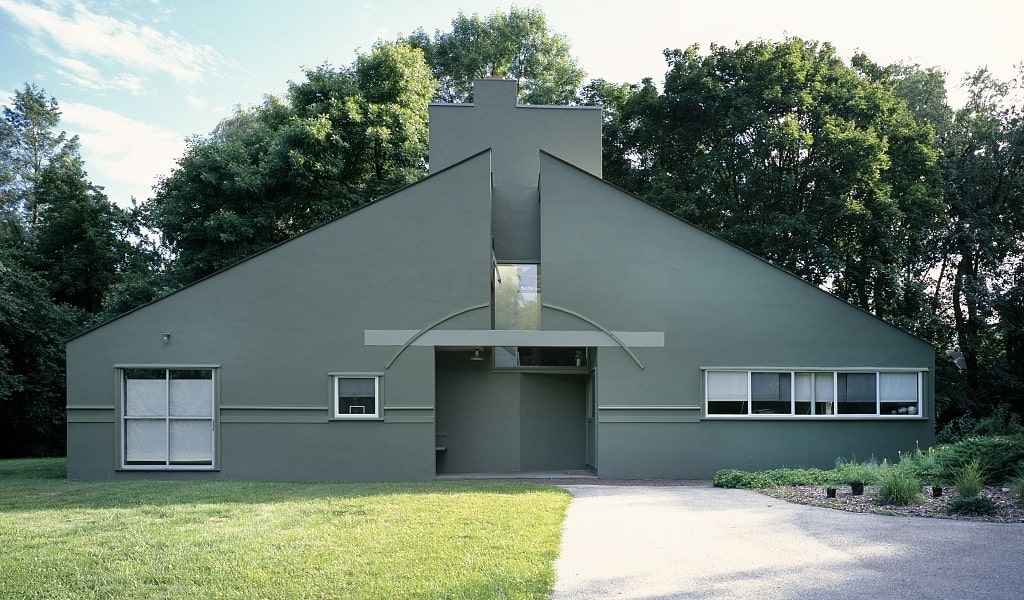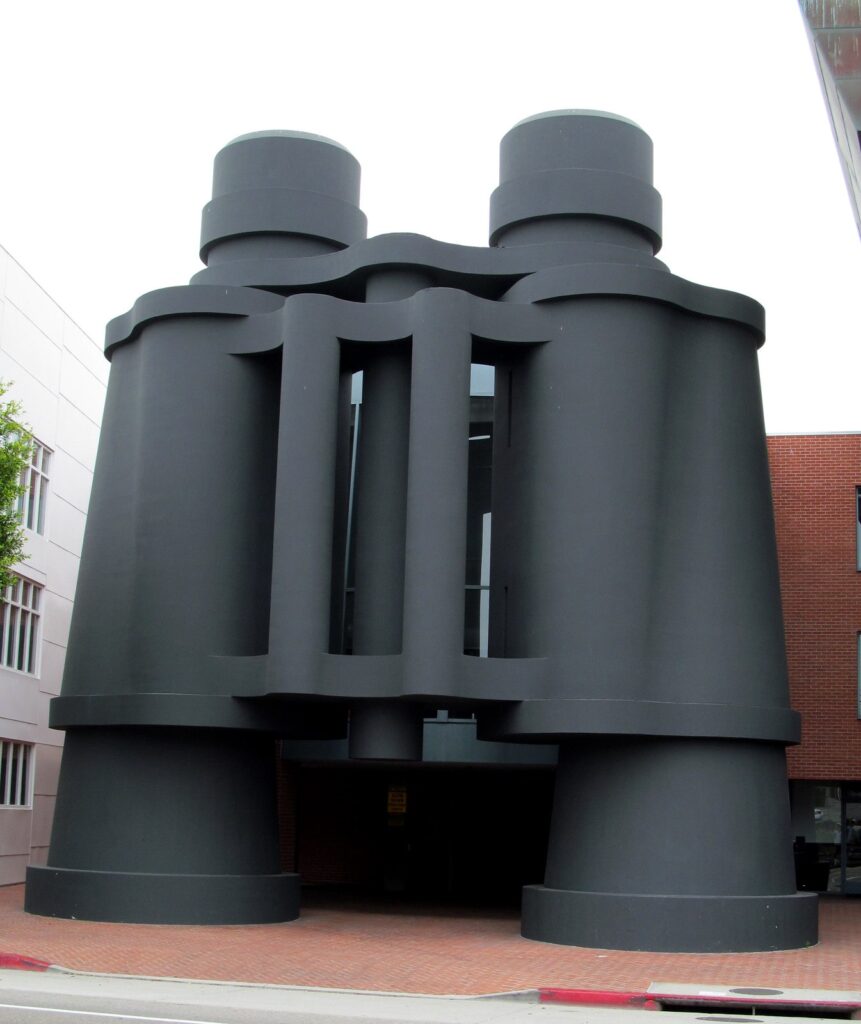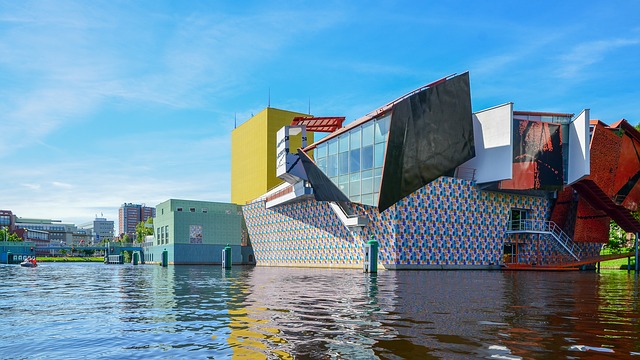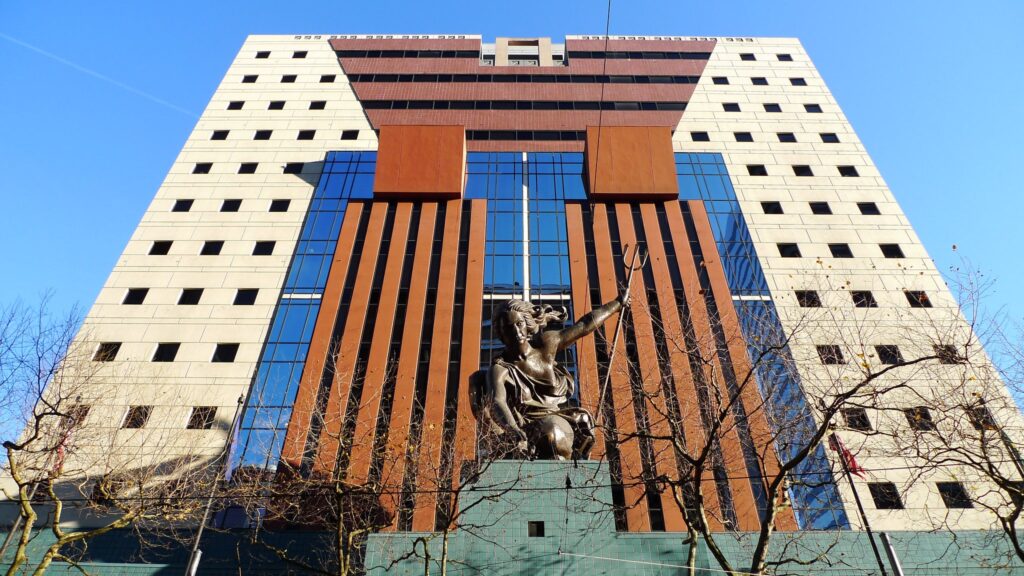Postmodern Architecture: Reviving History!
Postmodern architecture is an architectural style that emerged as a reaction to modern architecture in the 1960s. It is a comeback of historical architecture and also termed postmodernism.
There is a famous law by Sir Isaac Newton- “Every action has an equal and opposite reaction” and that fits perfectly right here!
Postmodernism architecture was a style that encouraged free-thinking design without any rules. The main idea behind this was to borrow inspiration from various cultures and design elements to create something that has never been done before. For a clear answer to “what is postmodern architecture?” let’s dive into the Ocean of postmodern architecture style.
Postmodern vs Modern Architecture:
Postmodern architecture style came into being due to negligence of history and culture in modern architecture.
When modern architecture was at its peak, many historic structures went under renovations. However, they followed the trend of modern architecture. This resulted in the extinction of old structures to replace them with modern characteristics.
Architects Denise Scott Brown and Robert Venturi introduced the Postmodern Movement to the whole world.
In the late 1960s, architects began to fight for the historic architecture that seemed to stay back in time. Some of the architects evolved this movement with their unique style. James Stirling, Charles Moore, Michael Graves, Frank Gehry, Philip Jonhson were some of the most prominent architects to adopt this style. Moreover, every architect had their own contribution and way of approach to design in this movement. That’s exactly how the architects started with this eclectic movement. Slowly, it started to reflect in the changing architecture.
Design features: Modern vs Postmodern Architecture:
As we all know postmodernism was to break the modern style. Therefore, it was exactly the opposite of what modern architecture was. Let’s have a look at how postmodern architecture contradicts modern architecture.
- Postmodern architecture focused on creativity and ornamentation. Modern architecture uses more simplified and minimal elements.
- Originality and local context were highly considered in postmodern architecture buildings. However, modern buildings had a purpose and function.
- The buildings also evolved from neutral colors to bright ones in the postmodern style.
- Postmodern architecture style can go in any direction while modern architecture was quite stiff.
- Postmodern architecture believed in incorporating elements from historical architectural styles. However, modern architecture was about reinventing everything from scratch.
- There were no rules in postmodern design, one was free to experiment. This was not the case with modern architecture.

Characteristics of Postmodern Architecture:
Postmodern architecture style went through many phases. Every architect had their different theory for it. Postmodern ideas are very vast. They have been derived by combining various styles. Therefore, it’s now time to learn the postmodern architecture characteristics:
- Asymmetrical buildings are the key point in postmodern architecture. It created unique buildings and made them stand out.
- Postmodern buildings were very complex. They had a variety of colors, textures, shapes, and themes. There was no limit to design in this architectural style.
- In postmodernism architecture style, it was all about breaking the building into many parts. They also represented various functions of a building. The use of various materials and elements from different styles made the postmodern buildings look like a village or a town.
- Curved forms, decorative elements, bright colors, borrowed from historical styles also identify postmodern buildings.
- The postmodern style adapted the classic elements and merged them with the new forms.
- Postmodern buildings are full of joy and are playful. The buildings actually looked like sculptures.
- Classical elements like arches, domes, and pillars were also prominent in postmodern buildings.
- The buildings were full of humor in the postmodern style. These structures were built with the context of their surroundings to give a message.
Prominent Buildings in Postmodern Architecture Style:
All the postmodern buildings in themselves contradict each other. Postmodern architecture cannot be defined with mere words and is actually very blurry.
However, we now have an image in our mind of what postmodern buildings look like. Therefore, it’s time to go through some of the postmodern architecture examples to have a clear perspective.
VANNA VENTURI HOUSE, PHILADELPHIA, PENNSYLVANIA:
This was the very first building built under postmodern architecture by Robert Venturi in 1964 for his mother. There’s a positive saying “Good things take time” and the result here is from patience and designing for more than six years. The house has elements like ribbon windows, gabled roof, and an arch-framed entrance, which was ripped from its function. The traditional elements were used in a very different manner. The gable roof has a vertical opening in the center. It is set on the longer side rather than the shorter one. The building laid the foundation for postmodern architecture, a decade before postmodernism actually came into action.

NEUE STAATSGALERIE, STUTTGART, GERMANY:
Built in 1984, this building is the connection to the old Staatgalerie which dates back to 1843. Designed by James Stirling, the building is an amalgamation of traditional design elements and modern materials. The building comprises of modern materials as well as the old ones. The use of travertine and sandstone with a touch of colored industrial steel makes the museum stand out. Different colors were used as functional identifiers, to depict different elements. This design by the architect is a unique contribution to the postmodern movement with many different features compared to other postmodern buildings.
PORTLAND BUILDING, PORTLAND, OREGON:
This was one of the very first postmodern architecture buildings. Michael Graves was the master architect behind the same. The building facade has so many symbolic elements that are in contrast with modern functional buildings. The structure stands somewhere in between the modern and postmodern architecture. The building is symmetrical, unlike other postmodernism architecture examples. However, the structure was given a symbolic touch through the colours of its environment. It draws the greens from the grass and the blues from the sky. It also became the winning design of the competition for the Portland Service building by beating other costly glass and concrete entries.
BINOCULARS BUILDING, LOS ANGELES, CALIFORNIA:
Designed by Frank Gehry, this office building hides behind a huge binocular sculpture. Postmodern architecture for Gehry began with two different buildings which together made up an office space. Gehry’s idea was to connect the two buildings with a giant random object that would serve as a sculpture. That’s how the binocular sculpture came into being. Artists Claes Oldenburg and Coosje Van Bruggen were behing its design. It then became the entry to the building for both cars as well as pedestrians.

GUGGENHEIM MUSEUM, BILBAO, SPAIN:
The complexity of swirling forms and captivating materials increases the beauty of this building. It is set on the edge of the River in Bilbao. The metallic facade of this building designed by Frank Gehry became another innovation in the postmodern architecture style. Titanium, limestone, and glass form the exterior curves of the building. They also have been designed to catch the light and react to the sun and weather. The building is no less than magic as it appears to ripple depending upon the changing light of nature. The building today is World famous for its architecture.

If modern architecture is the drop of water then postmodern architecture is as vast as Ocean because of the varieties it has. Postmodernism architecture evolved for years. However, if we see the first building in this movement and the last one; both are total opposites. There are so many beautiful branches that evolved from this style.






2 thoughts on “Postmodern Architecture: Reviving History!”
Comments are closed.